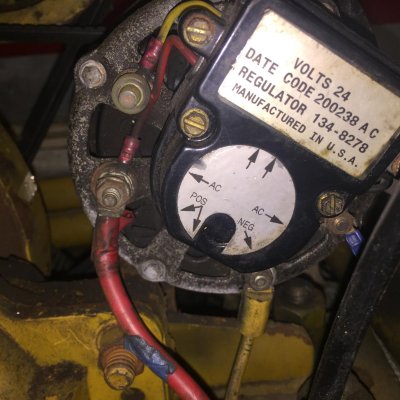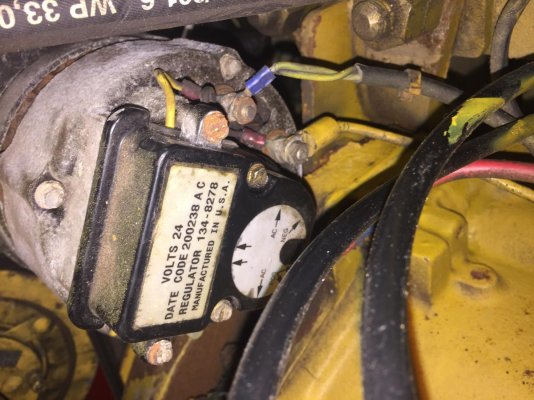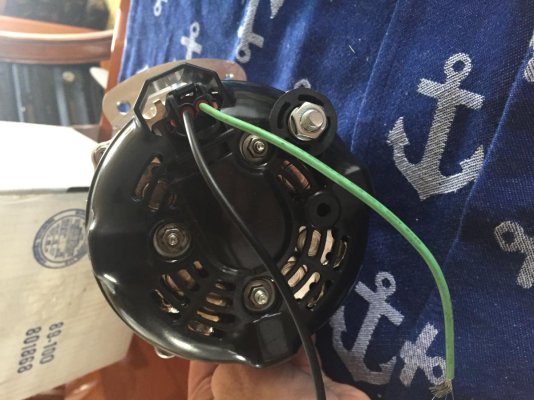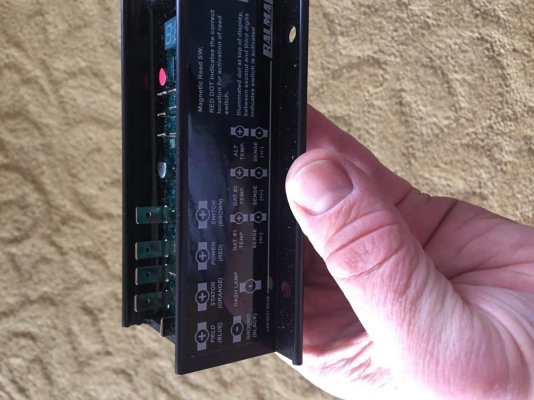Question about the alternator. You say Off Brand? Model number? Manufacturer?
Is it set up for or modified for an external regulator?
I suspect looking at the back , the picture, that it is a stock internal regulator alternator. I suspect it does not have provision for external regulation. Without that provision you can wreck the alternator, the regulator and/or the batteries.
Do you have a diagram for the alternator connections? A better, closer photo showing any labels or stampings/markings of the terminals present. If so post them.
I have studied the manual enough, I think, that the regulator needs that extra external regulation terminal for proper operation.
I may be all wet but I think you need to look again.
--Wire #1 Brown from ign sw. to provide turn on power to the regulator.
--wire # 2 Red from the alternator main output or ,better, direct to the battery so the regulator can read the actual voltage. It also likely provides the power for the variable voltage and power to the rotor so the regulator can control the alternator.
--wire # 3 Orange is for a tachometer drive signal and will maintain a tiny voltage to ensure the tach gets a signal eliminating the frequent problems when the alternator shuts down which then kill the signal and the tachometer then quits giving a revoulution count.
--wire #4 Blue Is the actual voltage control that the regulator feeds to the rotor. THe regulator varies this voltage to vary the amperage output from the alternator in line with the program you have set for the battery type.
--wires 5 - 11 You supply. THe other terminals, are simply for accessories, alternator and battery temperatures for protection and a lamp to indicate the regulator is working. The temps probes are a GOOD idea.
--wire # 12 is the regulator ground to be done at the alternator. Often there is a dedicated ground screw but if not then back out on of the case bolts and secure it to that bolt.
I won't say all alternators can be modified but most can be by an alternator/starter shop or by a handy owner. THe internal regulator will need to be removed or defeated and bypassed, some wiring changes made, maybe a new post for the BLUE wire to the brushes, some insulator bushings made and so on.
You need to plan on upgrading both the Positive output wire AND the Negative return wire or you may have trouble. Engine block grounds are not always as good as they would appear. Good enough for intermittent use while cranking and the light loads from other equipment but I would question for long term, high output use. The negative can be secured to the alternator mounting bolts unless it has a dedicated ground terminal.








